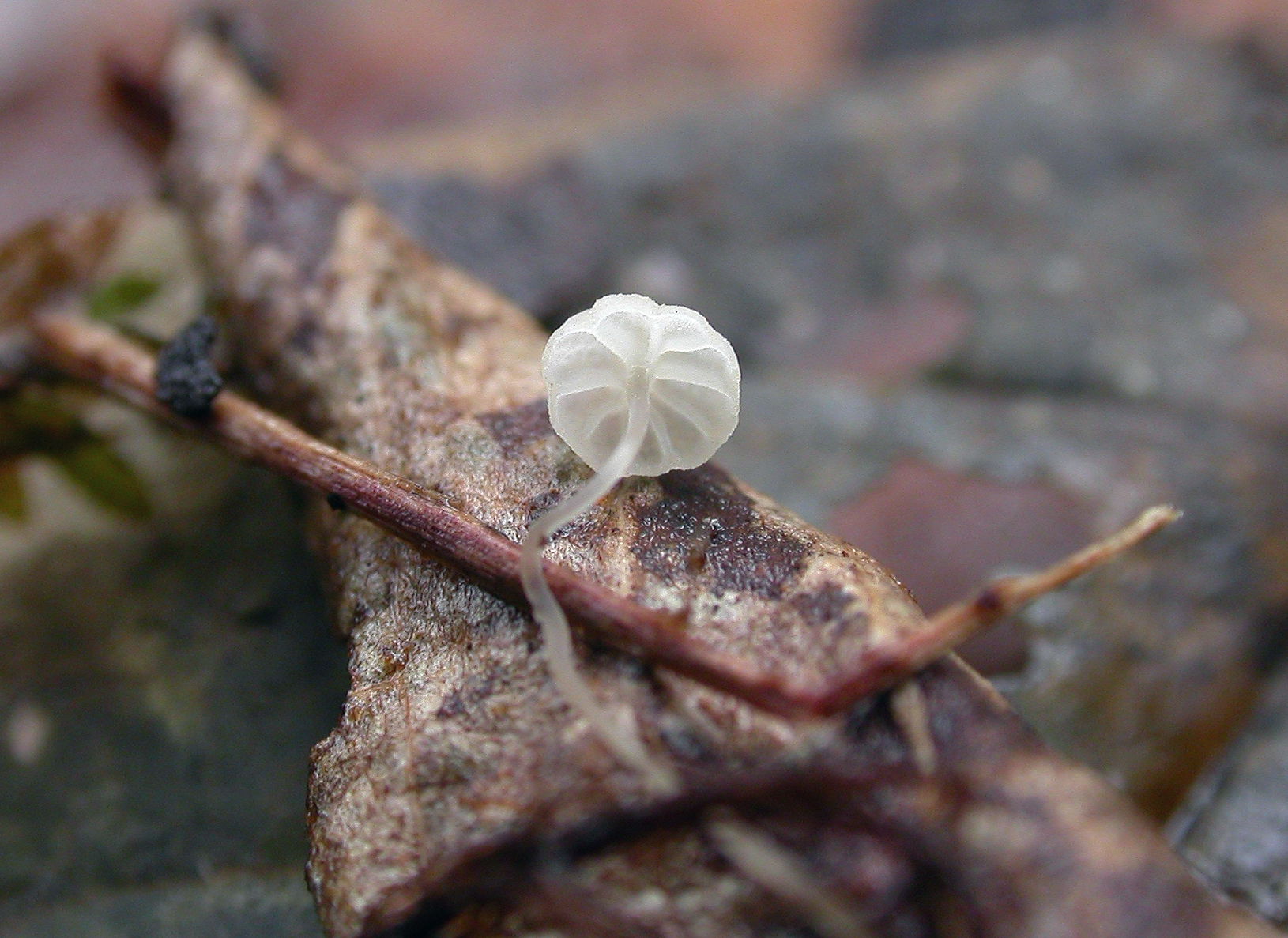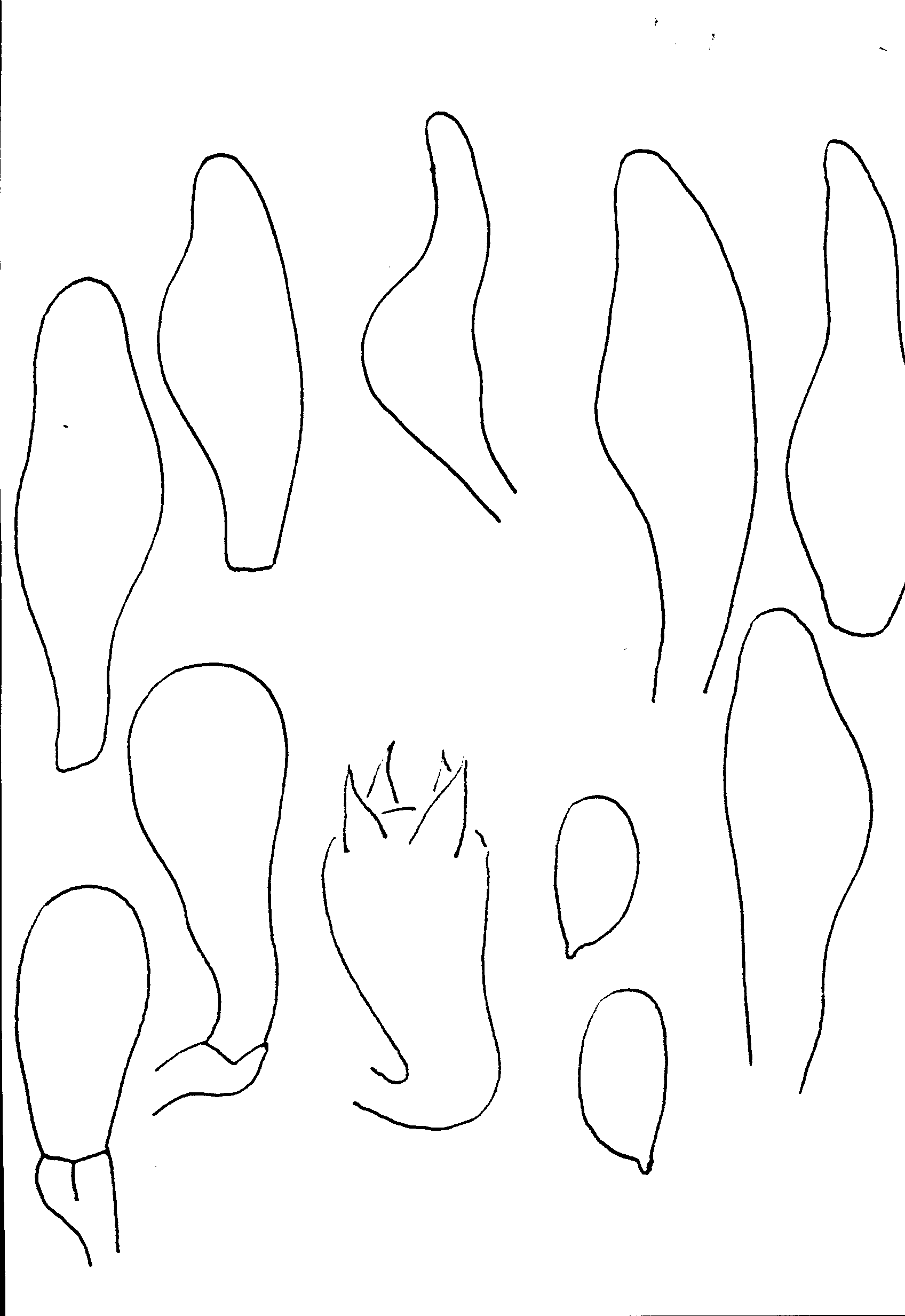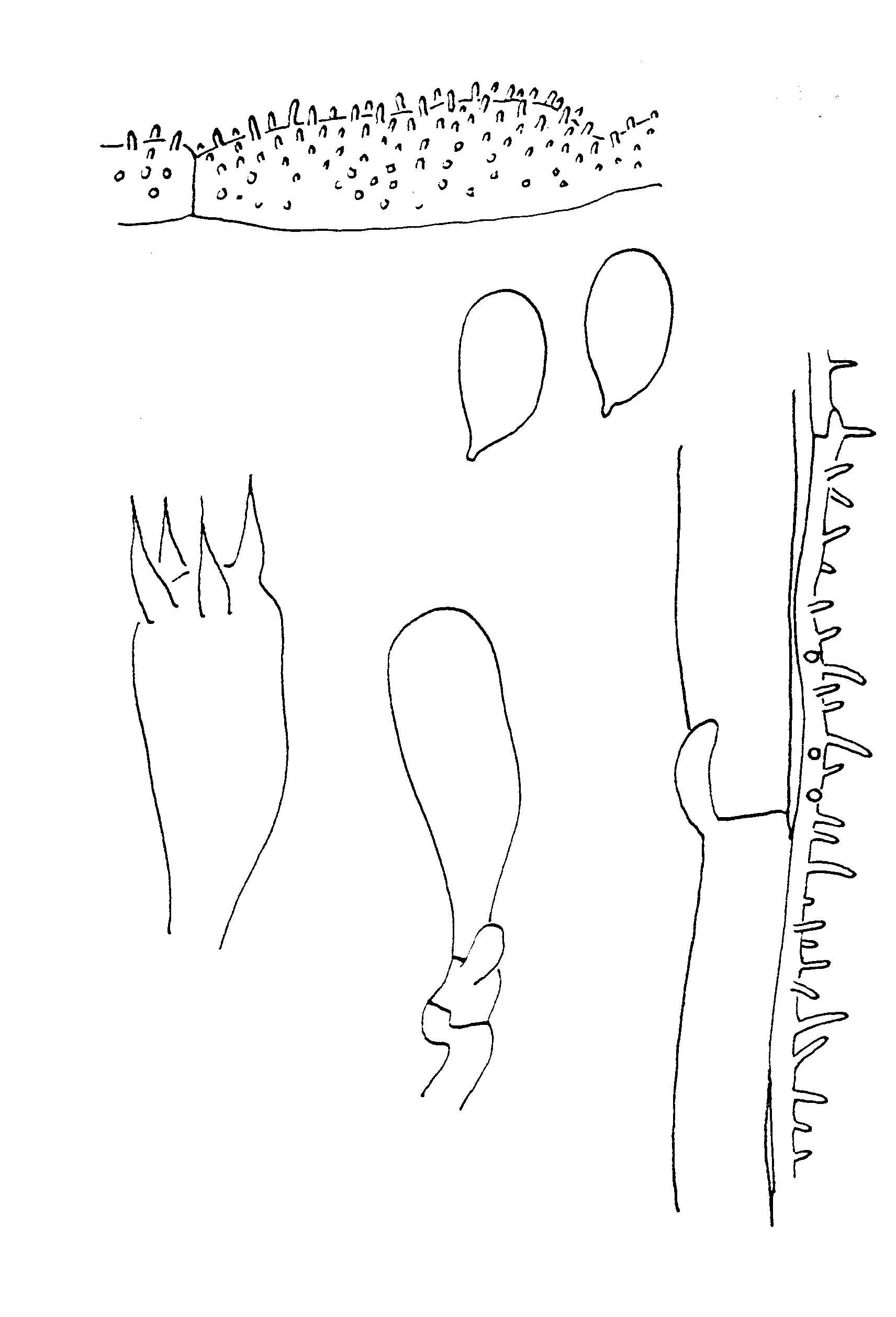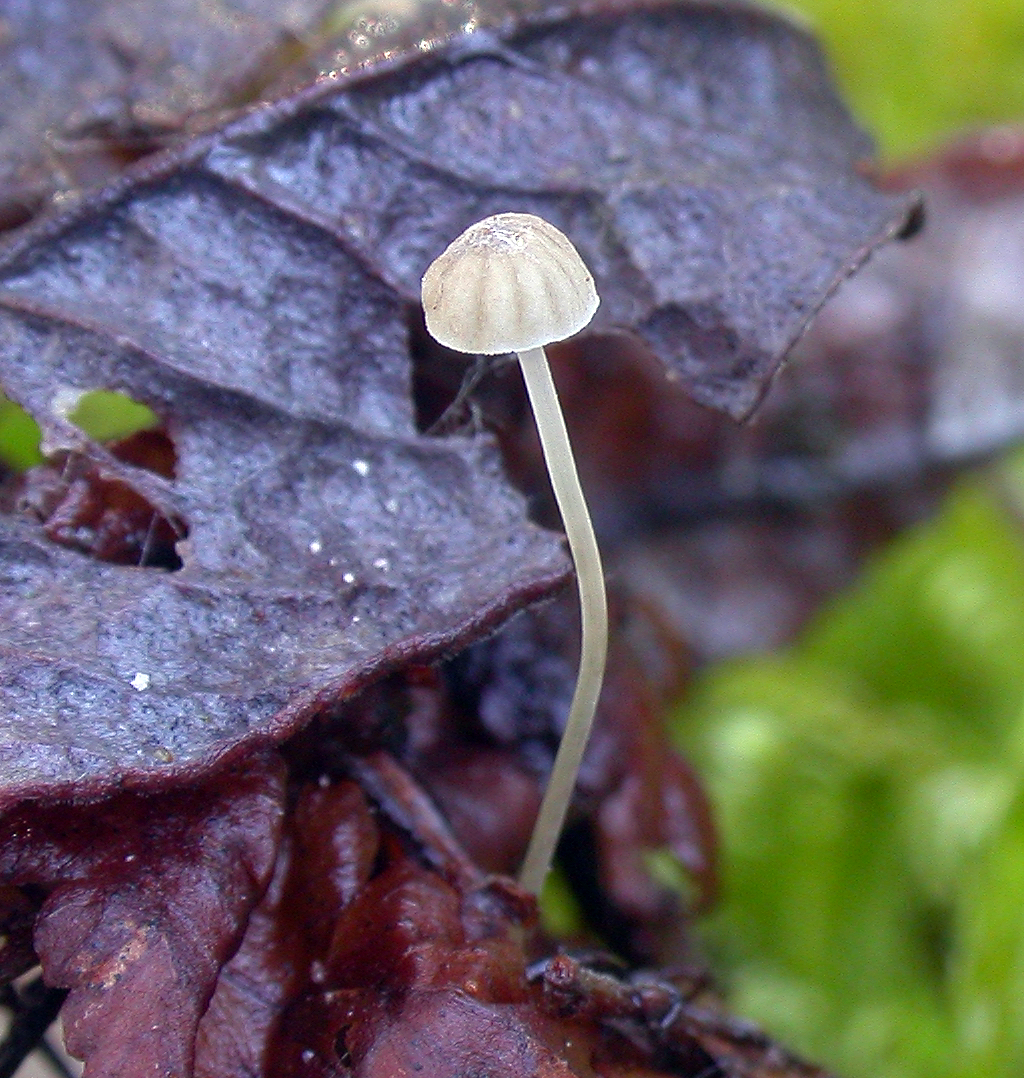Mycena terena
Mycena terena
Description
Cheilocystidia, basidia and spores.
Hypha of the pileipellis, spores, basidia, and hyphae of the cortical layer of the stem.
Cap 1-3 mm across, conical, parabolical, campanulate or hemispherical, occasionally with a small papilla when young, later ±umbonate, flattening with age, rarely plano-convex and somewhat depressed, shallowly sulcate, ±translucent-striate, minutely pruinose, glabrescent, at first very pale grey or pale beige, often with the centre darker grey, fading to white, often with the centre yellowish or ochraceous brown when drying. Gills 0-8 reaching the stem, adnate to broadly adnate, , white, the edge concolorous. Stem 5-10(-23) x <0.2 mm, cylindrical, minutely pruinose, glabrescent, entirely black in very young specimens except for the base which is whitish, retaining the black colour only at the very apex when growing older, watery grey to dark grey farther below, finally fading to greyish white or watery white throughout, the base attached to the substratum by shorter or longer, fine, white, shiny fibrils, but often seemingly inistituous. Odour none, taste not recorded. Basidia 17-27 x 7-10 µm, clavate, 4-spored, with plump sterigmata 4.5-6.5 µm long. Spores 7.2-9.5 x 4.5-5.8 µm, Q = 1.5 - 2.2, Qav ˜ 1.8, pip-shaped, amyloid. Cheilocystidia 17-34 x 6.5-11 x 0-4.5 µm, occuring mixed with basidia, cylindrical, subclavate, fusiform to sublageniform, occasionally sigmoid, smooth, rarely with a few, very coarse excrescences, apically generally broadly rounded but also more or less narrowed to form a neck. Pleurocystidia absent. Lamellar trama dextrinoid. Hyphae of the pileipellis 4.5-16 µm wide, densely covered with cylindrical, straight excrescences 1-2.5 x 0.9 µm. Hyphae of the cortical layer of the stem 1.5-4.5 µm wide, more or less densely covered with cylindrical, sometimes more thorn-like, straight to curved excrescences 1-3.5 x 0.9 µm. Clamps present at all tissues, but infrequent and not always easily seen.
Ecology and distribution
On fallen leaves of Salix caprea. Autumn. So far reported from two localities in South East Norway.



